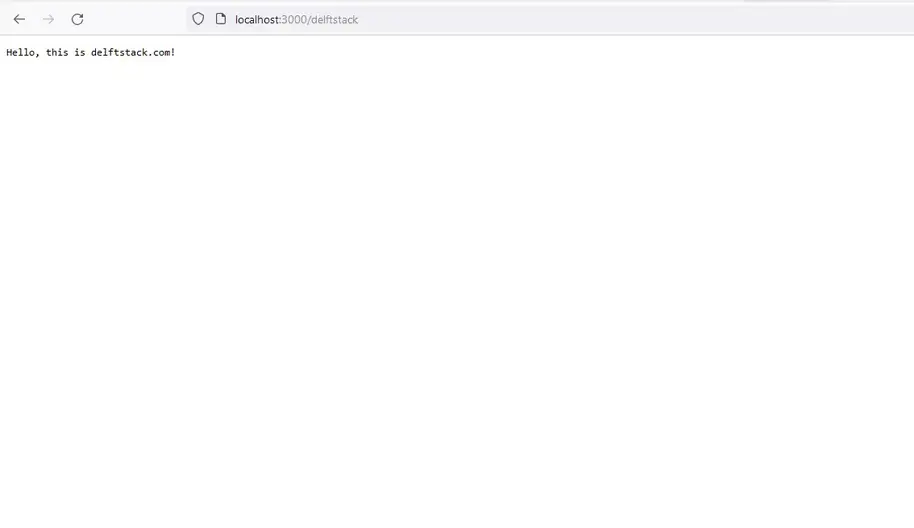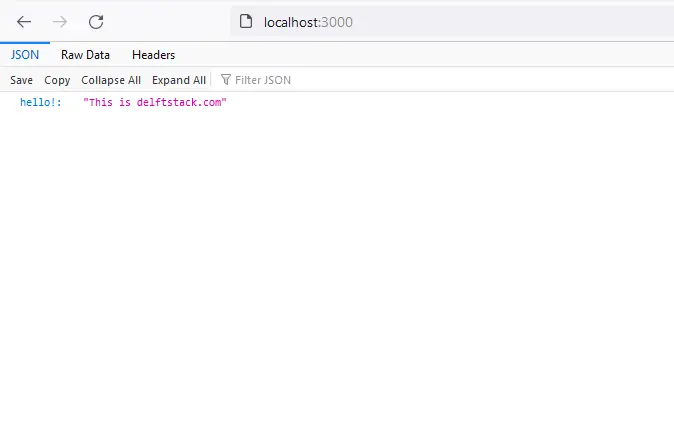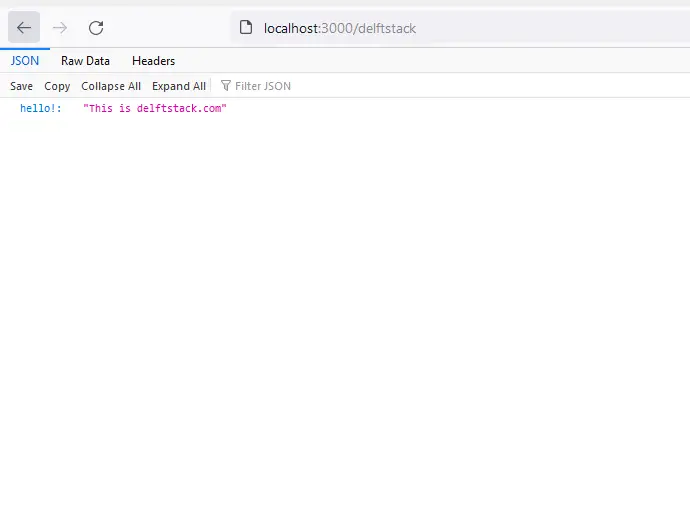Enabling CORS in GoLang
This article describes how to enable and use CORS in GoLang.
Go language CORS
Cross-origin resource sharing (CORS) is a process based on HTTP headers that defines the origins from which browsers are allowed to load and use resources. CORS is used to relax the same-origin policy, allowing JS scripts on one page to access data on other pages.
The same-origin policy ensures that two web pages have the same origin. This policy helps improve security by isolating malicious documents.
CORS is used to relax the same-origin policy by using the headers shown in the table:
| Header | type | illustrate |
|---|---|---|
| Origin | Request | Used to indicate to the server the origin of the request. |
| Access-Control-Request-Method | Request | It is used to indicate the HTTP method used to implement the request to the server. |
| Access-Control-Request-Headers | Request | Used to indicate headers in requests to the server. |
| Access-Control-Allow-Origin | Response | Used for origins allowed by the server. |
| Access-Control-Allow-Methods | Response | Comma-separated list of methods allowed by the server. |
| Access-Control-Allow-Headers | Response | Comma-separated list of headers allowed by the server. |
| Access-Control-Expose-Headers | Response | A comma-separated list of headers that the client is allowed to access the response. |
| Access-Control-Max-Age | Response | Used to tell the server how many seconds to cache the response to a preflight request. |
| Access-Control-Allow-Credentials | Response | Used to allow or restrict credentials for the server. |
Enabling CORS in GoLang
We can implement a function in Go to implement our CORS policy by using the Go language's net/http package. Follow the step-by-step process to enable CORS in GO
Create an application running on localhost with a port number that contains headers that will access current server resources from other pages. View the headers:
Response_Writer.Header().Set("Content-Type", "text/plain; charset=utf-8")
Response_Writer.Header().Set("Access-Control-Allow-Origin", "http://127.0.1.1:5555")
Response_Writer.Header().Set("Access-Control-Max-Age", "10")
- As we can see, we have enabled the CORS policy, so the JS script from http://127.0.1.1:5555 can access the data in our page or resource. It is better to save these headers in a method so that we can implement the CORS policy for our server.
-
Now let's set up the CORS policy for our server; for example, the function for headers is JiyikHandler. Now do this:
http.HandleFunc("/Jiyik", JiyikHandler) log.Fatal(http.ListenAndServe(":3000", nil))
log.Fatal(http.ListenAndServe(":3000", nil))will set up the CORS policy for our server. Let's implement this example and see the output.
GoLang file for CORS policy:
package main
import (
"fmt"
"log"
"net/http"
)
func main() {
http.HandleFunc("/Jiyik", JiyikHandler)
log.Println("Listening the request..")
log.Fatal(http.ListenAndServe(":3000", nil))
}
func JiyikHandler(Response_Writer http.ResponseWriter, _ *http.Request) {
Response_Writer.Header().Set("Content-Type", "text/plain; charset=utf-8")
Response_Writer.Header().Set("Access-Control-Allow-Origin", "http://127.0.1.1:5555")
Response_Writer.Header().Set("Access-Control-Max-Age", "10")
fmt.Fprintf(Response_Writer, "Hello, this is Jiyik.com!")
}
HTML/JS files for responses:
<!DOCTYPE html>
<html lang="en">
<head>
<meta charset="UTF-8">
<title>Jiyik</title>
</head>
<body>
<script>
async function doRequest() {
let localhost_url = 'http://localhost:3000/Jiyik';
let page_response = await fetch(localhost_url);
if (page_response.ok) {
let text = await page_response.text();
return text;
} else {
return `HTTP error: ${page_response.status}`;
}
}
doRequest().then(data => {
document.getElementById("print_output").innerText = data;
});
</script>
<div id="print_output">
</div>
</body>
</html>
The above code will write the response Hello, this is Jiyi.com! to the Go code in the HTML/JS page.
See the output:

CORS package in Go
The third-party package CORS is used to implement cross-origin resource sharing by defining NET/HTTP handlers. Before we start using this package, we must install it.
Use the following command:
go get github.com/rs/cors

Once installed successfully, we can use CORS in our code. Let's try a simple example:
package main
import (
"net/http"
"github.com/rs/cors"
)
func main() {
Demo_Mux := http.NewServeMux()
Demo_Mux.HandleFunc("/", func(Response_Writer http.ResponseWriter, Req *http.Request) {
Response_Writer.Header().Set("Content-Type", "application/json")
Response_Writer.Write([]byte("{"hello!": "This is Jiyik.com"}"))
})
DemoHandler := cors.Default().Handler(Demo_Mux)
http.ListenAndServe(":3000", DemoHandler)
}
In the code above, cors.Default()a middleware is set up with default options where all origins are accepted via simple methods like GET and POST.
Check out the output of the above code:

Using GET and POST methods with CORS in Go
We can also send requests through CORS using GET and POST methods. We have to assign them in CORS using the AllowedMethods field.
Let's look at an example:
package main
import (
"net/http"
"github.com/rs/cors"
)
func main() {
Demo_Mux := http.NewServeMux()
Demo_CORS := cors.New(cors.Options{
AllowedOrigins: []string{"*"}, //all
AllowedMethods: []string{http.MethodPost, http.MethodGet},
AllowedHeaders: []string{"*"}, //all
AllowCredentials: false, //none
})
Demo_Mux.HandleFunc("/Jiyik", func(Response_Writer http.ResponseWriter, r *http.Request) {
Response_Writer.Header().Set("Content-Type", "application/json")
Response_Writer.Write([]byte("{"hello!": "This is Jiyik.com"}"))
})
Demo_Handler := Demo_CORS.Handler(Demo_Mux)
http.ListenAndServe(":3000", Demo_Handler)
}
The above code will use the CORS package to implement the policy and enable both GET and POST methods to send requests.
See the output:

For reprinting, please send an email to 1244347461@qq.com for approval. After obtaining the author's consent, kindly include the source as a link.
Related Articles
Install GoLang using Brew
Publish Date:2025/04/15 Views:82 Category:Go
-
This article describes how to install GoLang using Brew on Linux or macOS. Install GoLang using Brew brew installs missing packages in Linux and macOS. It makes it easy to install GoLang on Linux or macOS. Follow the steps below to install
GoLang RWMutex Detailed Introduction
Publish Date:2025/04/15 Views:116 Category:Go
-
This article introduces how to use rwmutex in Go language. Go language RWMutex mutex is the abbreviation of mutual exclusion, which is used to keep track of which thread has accessed a variable at any time. Mutex is a data structure provide
Getting a string representation of a structure in Go
Publish Date:2025/04/15 Views:63 Category:Go
-
Go allows us to serialize data from structures using a variety of simple standard methods. Converting a structure to a string using String method in Go The GoLang package String helps implement simple functions to manipulate and edit UTF-8
Convert JSON to struct in Go
Publish Date:2025/04/15 Views:126 Category:Go
-
This article describes how to convert JSON to struct in GoLang . Convert JSON to Struct using Unmarshal method in Go The encoding/json package of the Go language provides a function Unmarshal to convert JSON data into byte format. This func
在 Golang 中使用 If-Else 和 Switch Loop Inside HTML 模板
Publish Date:2023/04/27 Views:104 Category:Go
-
本篇文章介绍了在 Golang 的 HTML 模板中使用 if-else 和 switch 循环。因此,只要输出是 HTML,就应该始终使用 HTML 模板包而不是文本模板。
Golang 中的零值 Nil
Publish Date:2023/04/27 Views:185 Category:Go
-
本篇文章介绍 nil 在 Golang 中的含义,nil 是 Go 编程语言中的零值,是众所周知且重要的预定义标识符。
Golang 中的 Lambda 表达式
Publish Date:2023/04/27 Views:699 Category:Go
-
本篇文章介绍如何在 Golang 中创建 lambda 表达式。Lambda 表达式似乎不存在于 Golang 中。 函数文字、lambda 函数或闭包是匿名函数的另一个名称。
在 Go 中捕获 Panics
Publish Date:2023/04/27 Views:104 Category:Go
-
像错误一样,Panic 发生在运行时。 换句话说,当您的 Go 程序中出现意外情况导致执行终止时,就会发生 Panics。让我们看一些例子来捕捉 Golang 中的Panics。

